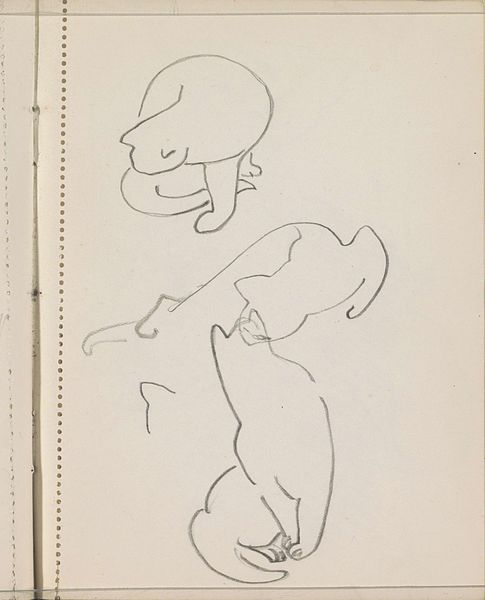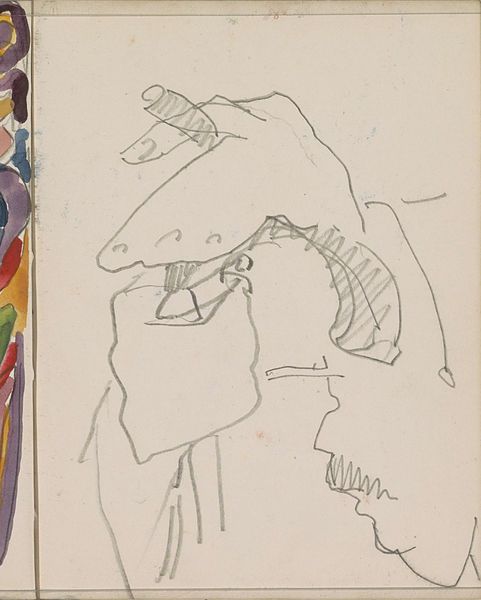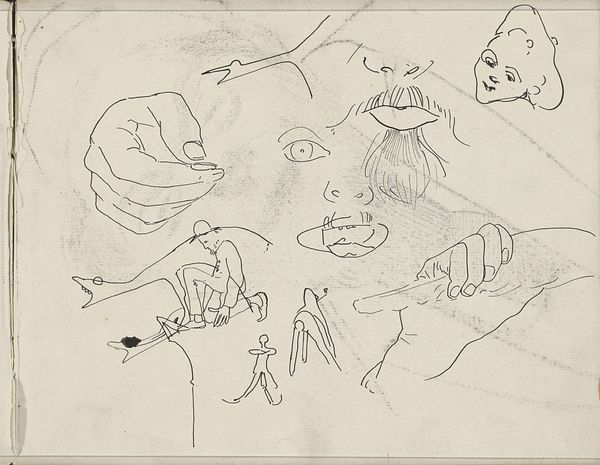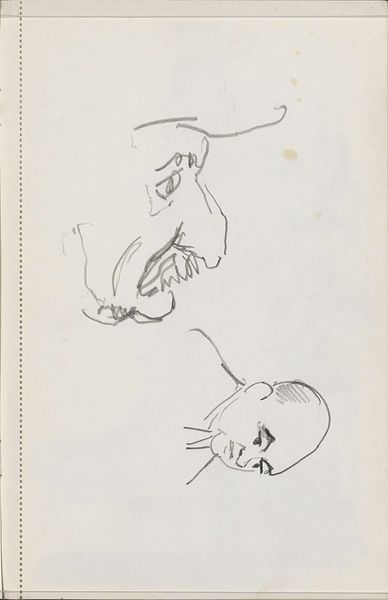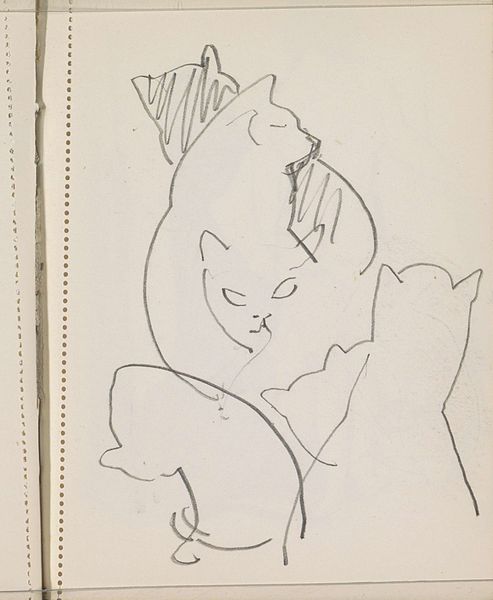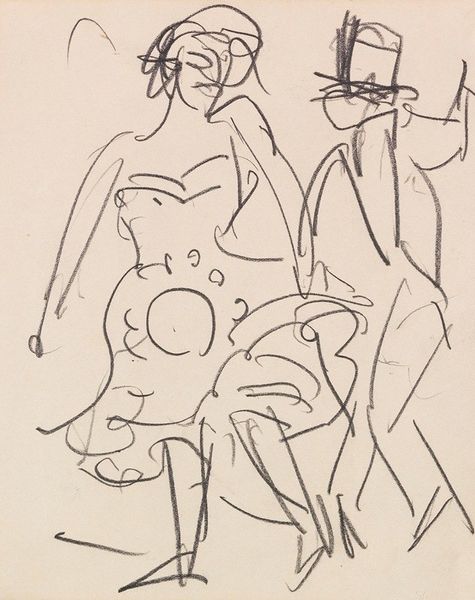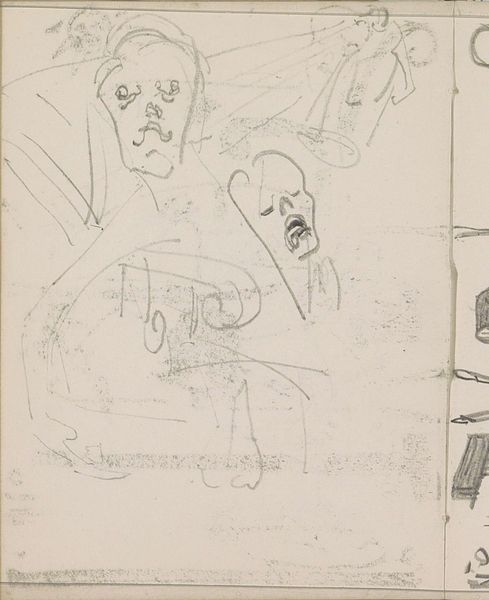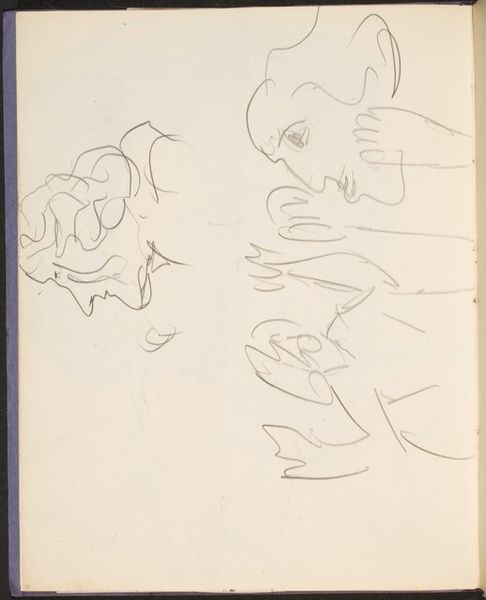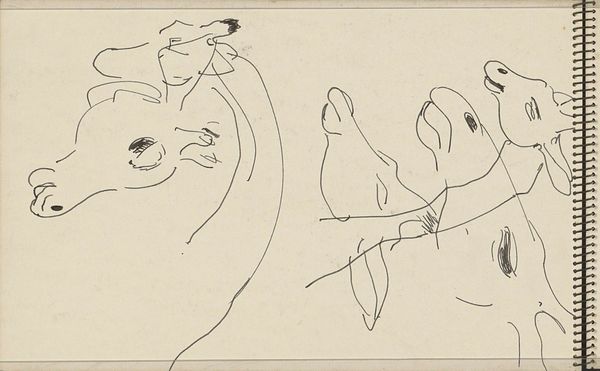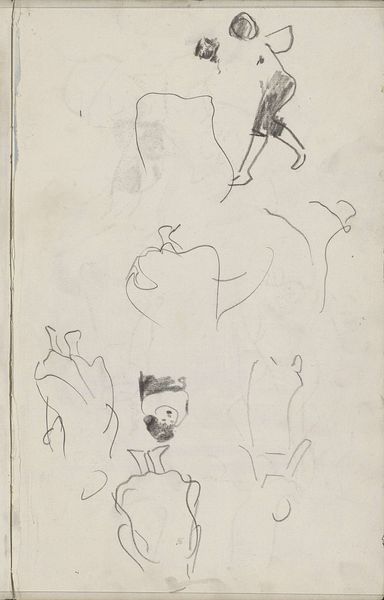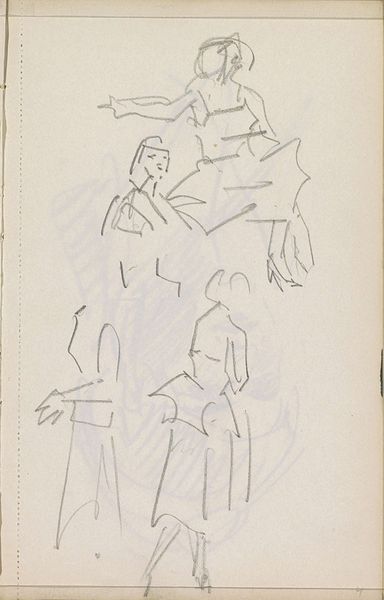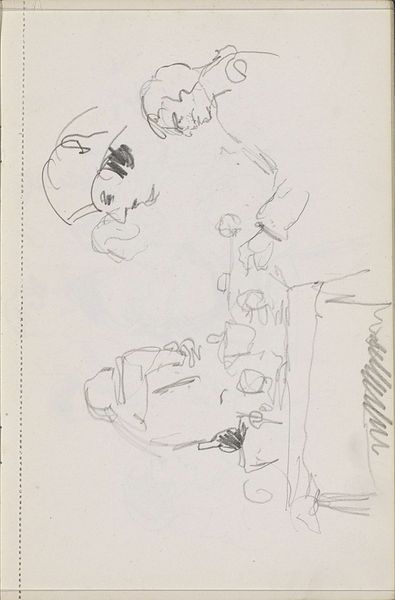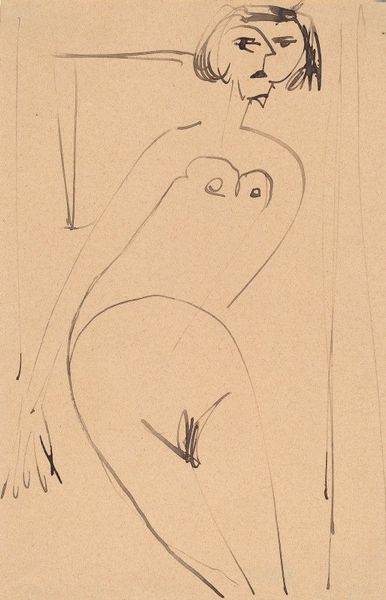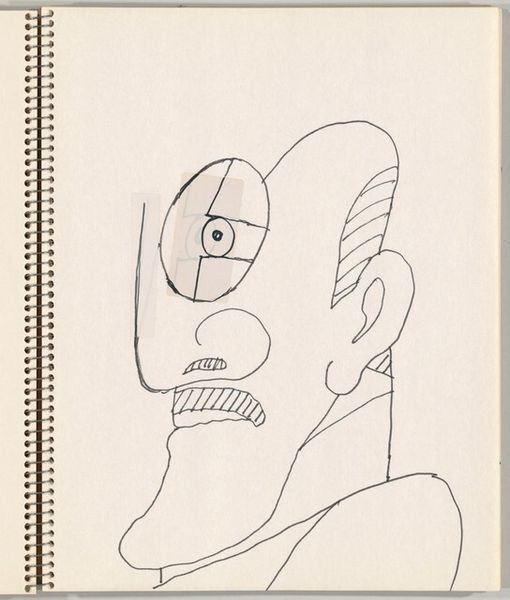
drawing
#
portrait
#
drawing
#
comic strip sketch
#
imaginative character sketch
#
figuration
#
personal sketchbook
#
idea generation sketch
#
sketchwork
#
ink drawing experimentation
#
line
#
sketchbook drawing
#
storyboard and sketchbook work
#
academic-art
#
sketchbook art
#
initial sketch
Copyright: Rijks Museum: Open Domain
Curator: This sheet of “Figuurstudies,” or Figure Studies, from sometime between 1906 and 1945, by Reijer Stolk, offers a glimpse into the artist's process, presently residing here at the Rijksmuseum. Editor: It's raw, isn't it? Almost aggressively so. The hasty lines give the figures a quality of fleeting, unfinished thought. There’s a haunting intimacy to seeing an artist’s notebook like this. Curator: The composition itself is fascinating. Stolk seems preoccupied with line and form above all else. Note how the absence of shading or color directs the eye to the relationships between lines, how they define volume and expression. Semiotically, the visible page's spiral binding subtly yet potently underscores its status as an incomplete exploration, a sketch. Editor: I wonder what context generated these studies. The period listed, 1906-1945, encompasses two world wars, enormous upheaval. I am curious if it was war that pushed artists toward sketching, the cheaper medium making a political and art world statement for the working-class, or not. There's an emotional intensity that reads, to me, of that era. Was Stolk simply practicing, or was he capturing something of the world around him, these emotional characters representing social types? Curator: It's a compelling consideration. What truly strikes me, however, is the confident reduction of human form to these bare essentials. It's academic, yes, but also strikingly modern in its simplification. The drawing’s meaning comes not from mimetic accuracy, but from the arrangement of line and space; it is about relationships that signify, rather than representing a reality. Editor: I'd argue that those lines wouldn't be so affecting if they didn’t feel so intimately human. Ultimately, while technique and formalism can be interesting, they miss the essential impact. To view the sketch detached from sociohistorical interpretation impoverishes its cultural resonance, and therefore, its meaning. Curator: Perhaps we find meaning in different elements, which is perfectly reasonable. It certainly lends a great perspective, reminding us about how many readings an artwork allows! Editor: Indeed, and that's why we engage with them, to tease out precisely those alternate perspectives, those vital questions, in all of the complexity and beauty.
Comments
No comments
Be the first to comment and join the conversation on the ultimate creative platform.
